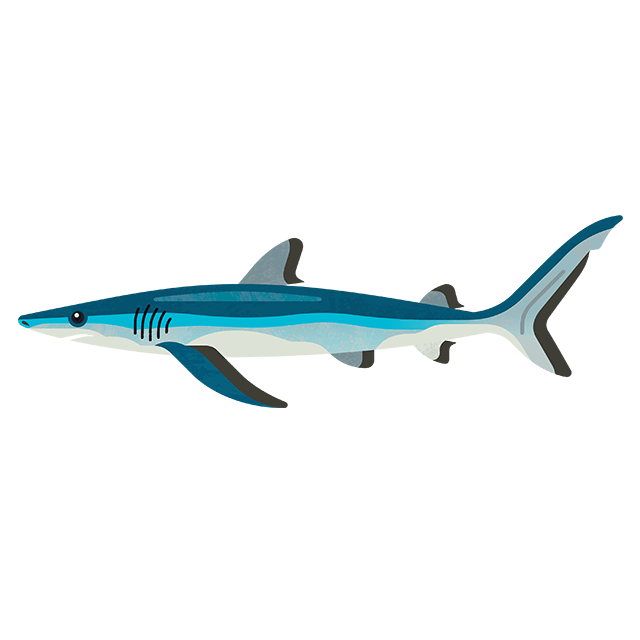
Five sharks found in UK waters
Sharks are some of the ocean’s most captivating, and often misunderstood, creatures. Here are five found in UK waters, including the basking shark.
Our sharks need protecting
Sharks aren’t just great whites and hammerheads – did you know there are more than 400 known species of shark in the world? And more than 40 of these, including some of the largest and fastest, can be found living in or visiting UK waters.
1. Shortfin mako shark

Credit: Timas Kotouc via Shutterstock
The shortfin mako is the fastest shark in the sea, thought to be able to reach swimming speeds of nearly 50mph. These sharks are apex predators, sitting right at the top of the food chain, and their speed enables them to catch fast-swimming prey such as tuna and swordfish. As well as being able to dive to depths of more than 400ft, they can jump as high as 20ft out of the water. Shortfin makos are spotted in waters all over the globe and, although rare, are found from time to time in the seas around the UK and Ireland.
2. Basking shark

Credit: Peter Bardsley
The basking shark can reach lengths of up to 12m and is second in size only to the gigantic whale shark. These gentle giants are filter feeders, mostly dining on plankton. Basking sharks do not actively seek out food or suck in water – instead they swim with their mouths open, catching whatever goes through. Their huge mouths can be up to a metre wide. The basking shark is a seasonal visitor to the UK – the best time to spot one is between May and October, when a significant number of them arrive in British waters.
3. Blue shark

Credit: Mark Kirkland
Blue sharks are highly migratory and, each year, they make huge trans-Atlantic migrations, visiting the British Isles during the summer. They will often travel distances of more than 5,000 miles in a single trip! These sharks are one of the few types that migrate in a ‘school’ or large group. Interestingly, there is often a hierarchy with these schools, and they can be segregated by size or sex. Sometimes, groups of all females or all males pair up in a school. Smaller blue sharks are sometimes prey for other larger sharks like the great white or the tiger shark (these two have not yet been spotted in UK waters).
4. Common thresher shark

Credit: Saeed Rashid
The common thresher shark’s name comes from its unusually large tail, which is more often than not as long as the six metre shark itself. They use their unique tails like a whip to stun their prey. They have also been known to thresh around on the seabed, raising mud and disorientating surrounding fish, then easily picking them off. Common thresher sharks typically visit British waters in the summer but are not considered a common sight. Very occasionally, they can be seen close to land.
5. Greenland shark

Credit: Dotted Yeti via Shutterstock
Greenland sharks are the second largest species of carnivorous shark after the great white. While they can be found in very deep waters around the UK, it’s highly unlikely you would ever cross paths with one – they are rarely encountered by humans and we know little about their life cycle. Sometimes referred to as the world’s most mysterious shark, footage of Greenland sharks swimming in their natural environment was not captured until 2003. Research has shown these fascinating creatures could live to be around 400 years old, making them the longest-lived vertebrates on the planet.
It’s estimated 100 million sharks are killed every year worldwide because of unsustainable fishing practices, shark finning, overfishing and habitat destruction. If this continues, we are in danger of losing many shark species forever.








